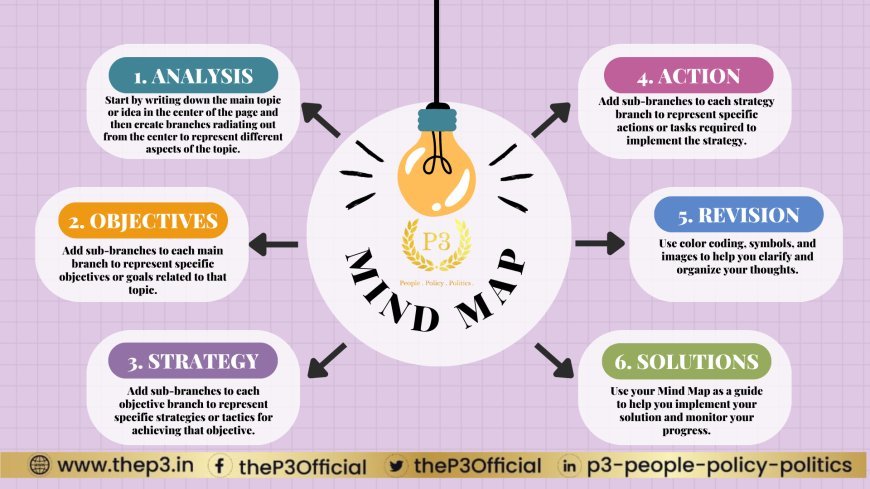Unlock Your Creativity and Productivity with Mind Mapping: A Visual Guide to Organize, Generate, and Implement Ideas
Summary: Explore the world of Mind Mapping and unlock your creative potential with this comprehensive guide. Mind Mapping is a visual technique that enables you to organize ideas, concepts, and information in a structured and imaginative way. This article takes you through the step-by-step process of creating a Mind Map, starting from analysis and objectives to strategy, action, and solution. Discover how Mind Mapping can be used for brainstorming, problem-solving, project planning, note-taking, and information organization. By leveraging Mind Mapping, you can gain a deeper understanding of complex concepts, improve communication, and achieve remarkable results. Empower yourself with this simple yet powerful tool and experience a transformative shift in your approach to idea generation and productivity. Visit www.thep3.in to learn more. Meta Description: Discover the power of Mind Mapping, a visual tool that revolutionizes idea generation, problem-solving, and information organization. Learn the step-by-step process to create effective Mind Maps and leverage this technique to enhance your creativity, productivity, and problem-solving abilities.

By using Mind Mapping, you can create a visual representation of your thoughts and ideas that can help you to better understand and communicate complex concepts. It is a simple but powerful technique that can enhance your creativity, productivity, and problem-solving abilities.







